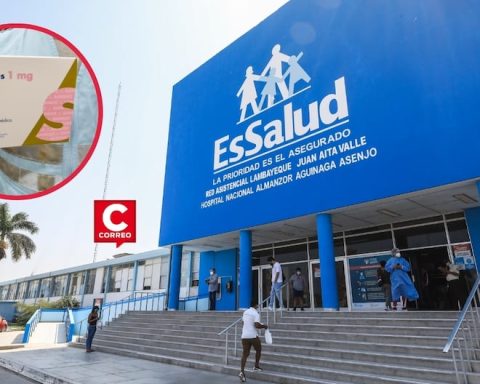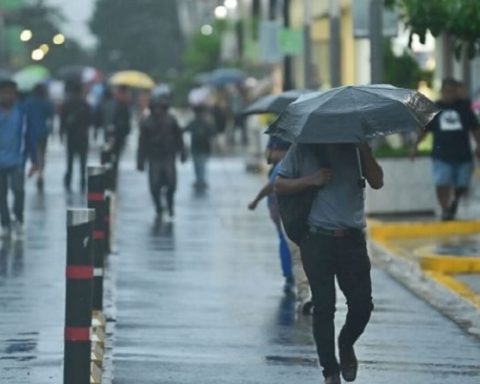Something that has always been said is that Bogotá was never the same after the pandemic, since the actions taken by the administration at that time to address the social crisis that broke out in the city, brought the public debt to levels that, although they have been managed well, Today they have taken away room for manoeuvre to think about major initiatives for the future.
And if we add to this the fact that the city currently has active work fronts at various points at the same time, each one demanding resources and efforts from the District, the panorama is challenging, since the management of the accounts requires a great deal of precision and responsibility on the part of the authorities.
For reading: Inflation in Colombia could soon resume its downward path despite the pressures
Deteriorated finances
This week, a report from the Standard & Poor’s agency was released, which confirmed the long-term debt rating of the Bogota Bond Issuance and Placement Program in AAA, after highlighting the “solid payment capacity” and that it has demonstrated adequate performance in tax collection despite the economic slowdown, thanks to its strength. institutional and the implementation of efficient monitoring and follow-up measures.
The rating agency indicated that good tax management has allowed the District to maintain a growing trend in its taxes, with an average annual increase of 21.7% between 2021 and 2023, which, although it will continue, will be a little weaker in the future due to the slowdown that is affecting the entire country.
Night view of the International Center of Bogotá.
Carlos Ortega, Mauricio Moreno, Rodrigo Sepulveda / EL TIEMPO
“The current government has proposed a District Development Plan of approximately $142 billion that will be partially financed with debt, which would increase Bogotá’s debt sustainability indicator to 79% in 2027 from 56.2% in 2023. This indicator is below the regulatory limit. However, we will be attentive to its performance taking into account the accelerated growth of debt that would result in less leverage flexibility for future administrations,” he explained.
It should also be said here that despite the lower economic dynamicsBogotá’s financial performance remains favorable, reflected in a 16.7% growth in tax revenues in 2023, exceeding previous projections by S&P Global Ratings. This increase was mainly driven by Industry and Commerce, unified property tax, and motor vehicle taxes, which accounted for 88.6% of tax revenues.
In other news: Portfolio of intervened EPS has deteriorated since the measure was applied
Pressures from Transmilenio
In another section, Standard & Poor’s focuses on Transmilenio and the pressure that this firm exerts on the city’s finances, highlighting that in the period 2020-2023 transfers from Bogotá to Transmilenio (TMSA) increased by 55%, driven by the decrease in demand, the increase in operating costs and the persistent high evasion in the system and that the accounts this year have similar projections.
“It is highly relevant to the mobility and economic performance of the city, “For this reason, it has the permanent support of the territorial entity. We believe that the District is capable of continuing to support the transportation system; however, we will be attentive to the dynamics of the demand for the system given the structural changes in it,” they warned.
For this reason, Transmilenio’s performance and financial stability will be closely monitored, as well as the operational and financing strategies implemented by the managing body and the District, in order to increase demand and reduce dependence on district transfers, with a view to improving the efficiency and sustainability of the system in the short and medium term.
You may be interested in: After a turbulent Monday, Asian stocks rebounded, but European ones remain in the red
Risks on the road
A final point reviewed in this report is the debt quota. for $8.6 billion that the Mayor’s Office requested from the Council, noting that they perceive the necessary solidity to pay these resources in the future, derived from access to the financial market and various sources of financing. However, it maintains that the accelerated growth of the debt could reduce financial flexibility for future administrations and due to this it is important to carefully review the disbursements of the debt so that fiscal stability is not compromised.

Transmilenio
iStock
Regarding the deterioration in liquidity, they add that it was something that “we anticipated in our last review, taking into account the boost given to the various projects and expenses by the previous administration,” although they maintain that they will closely monitor the decisions made in fiscal matters and how these indicators evolve.
Finally, Standard & Poor’s made it clear that the confirmation of Bogotá’s rating will depend on the continued efficiency of tax collection and oversight, as well as the sustainability of the District’s finances, ensuring that expense growth is aligned with revenue dynamics.
In addition, it will be crucial for them to carry out investment projects that contribute positively to the economic dynamics of the territorial entity, as well as to overcome as soon as possible the delays that exist in some active work fronts.
Read here: Budget investment started the second half of the year with a delay of 13.6%
On the other hand, they warn that the rating could be negatively affected. if there is a deterioration in economic dynamics, which could impact tax collection and cause a sustained decrease in tax revenues.
They are also concerned about a sustained increase in operational expenses, especially in areas not related to investment, as well as a weakening of the financial situation of Bogotá’s decentralized entities, such as Transmilenio, which could require greater commitments of resources from the territorial entity.
It should be noted that the Mayor’s Office itself has shown itself to be aware of the fiscal challenges that the city is facing and therefore has given priority to the payment of commitments and the release of new quota to think about future initiatives that help maintain the good pace of Bogotá’s economy, despite the adversities.

















